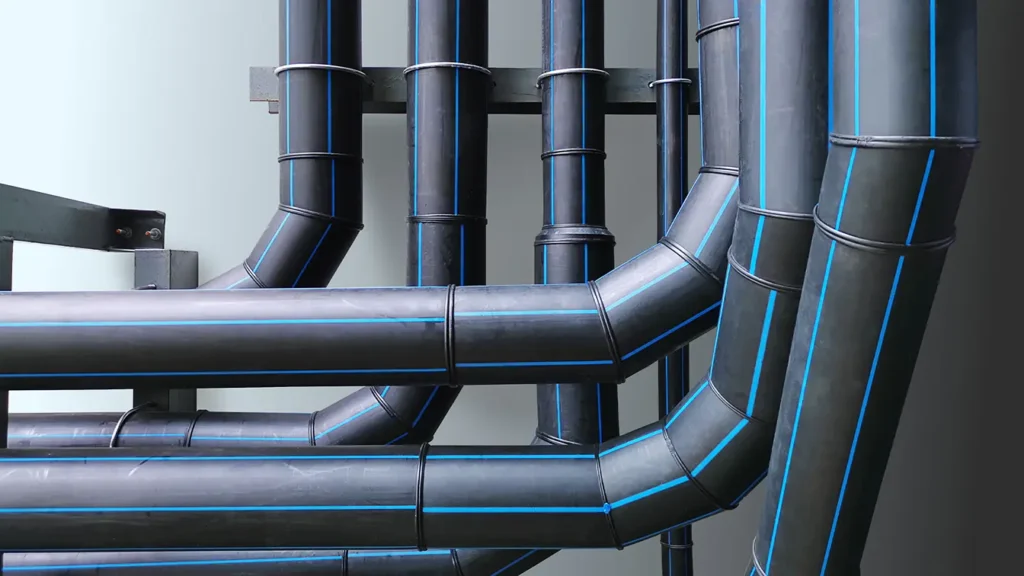The installation of Polyethylene (PE) piping systems in chemical plants is a critical component of ensuring efficient and safe operations. With its excellent chemical resistance, flexibility, and durability, PE piping is increasingly favored for transporting various chemicals, including water, solvents, and other fluids. However, for installation to be successful, careful planning, adherence to standards, and effective execution are essential. This article will guide you through the installation process of PE pipes in a chemical plant, addressing pre-installation considerations, installation techniques, and post-installation evaluation steps.

1. Understanding PE Pipe: Properties and Applications
Before delving into the installation process, it is essential to understand the properties and applications of PE piping. Polyethylene is a thermoplastic resistant to a wide range of chemicals, making it an ideal choice for various applications in chemical facilities. It is lightweight, which makes handling easier, and has high impact resistance and low thermal conductivity. Furthermore, PE pipe joints can be fused together, creating a robust and leak-free system.
2. Pre-Installation Considerations
2.1 Planning and Design
Proper planning and design are crucial to ensuring a successful PE pipe installation. This phase should involve:
- System Design: Collaborate with engineers to determine pipe sizes, specifications, and layout based on the intended application. The design should encompass flow requirements, pressure ratings, and chemical compatibility.
- Material Selection: Ensure that the chosen PE pipes are suited for the specific chemicals they will transport. It is vital to consult the manufacturer’s guidelines regarding chemical resistance.
- Regulatory Compliance: Familiarize yourself with local regulations and standards pertaining to the installation of piping systems in chemical plants. Ensure that the design adheres to these requirements.
2.2 Site Preparation
The installation site must be adequately prepared to facilitate the installation process. Key considerations include:
- Site Assessment: Conduct a thorough assessment of the installation area, looking for obstacles, slope requirements, and existing utilities.
- Clearing the Area: Clear the site of debris and vegetation to provide a safe working environment.
- Safety Protocols: Establish safety protocols, including the use of Personal Protective Equipment (PPE) and the potential identification of hazardous materials in the area.
3. Installation Techniques
Once pre-installation considerations have been addressed, the actual installation can begin. This section outlines the key steps involved in installing PE pipes in a chemical facility.
3.1 Tools and Equipment
Before installation, gather the necessary tools and equipment, including:
- Fusion Equipment: For heat fusion joints (butt fusion or saddle fusion). Ensure that these are appropriate for the diameter and type of PE pipe being installed.
- Cutting Tools: Such as pipe cutters or saws, designed for clean and precise cuts.
- Alignment Tools: Such as clamps and jigs to ensure pipes are aligned correctly before and during fusion.
- Pipe Support Systems: These may include brackets and hangers that will secure the pipes along their intended route.
3.2 Pipe Preparation
- Cutting: Measure and cut the PE pipe to the required lengths, ensuring that cuts are square and clean.
- Deburring: Remove any burrs or sharp edges from the cut ends of the pipes to facilitate smooth connections and prevent leaks.
3.3 Joining Techniques
There are several methods for joining PE pipes, with heat fusion being the most common in chemical plants:
- Butt Fusion: This method involves heating the ends of two PE pipes until they melt and then pressing them together. The fusion process requires precise temperature control and fusion time based on pipe thickness.
- Electrofusion: In this method, a special fitting with built-in heating coils is used. The coils are activated to fuse the PE pipes and fittings together.
- Socket Fusion: This technique employs a heated socket fitting to join a pipe and fitting end together.
Regardless of the method selected, it is essential to follow the manufacturer’s guidelines and implement quality control measures.
3.4 Testing and Inspection
After installation, conduct thorough testing and inspection to verify the integrity and functionality of the PE piping system:
- Visual Inspection: Examine all joints for proper alignment and potential gaps or imperfections.
- Pressure Testing: Conduct a pressure test according to applicable standards to ensure the system can withstand operational pressures without leaks.
- Leak Testing: Utilize a leak detection system or method to pinpoint any potential leaks in the joints or seams.
4. Post-Installation Evaluation
After testing and inspection, it is vital to carry out a post-installation evaluation to ensure ongoing safety and performance:
4.1 Documentation
Maintain comprehensive documentation of the installation process, including designs, materials used, and test results. This documentation is invaluable for future maintenance or audits.
4.2 Training and Handover
If necessary, provide training to the plant personnel who will operate and maintain the installed piping system. Ensure they are familiar with operational protocols and safety measures.
4.3 Ongoing Maintenance
Regular maintenance is key to ensuring the longevity and reliability of PE piping systems. Develop a maintenance schedule that includes periodic inspections and performance checks.
Conclusion
The installation of PE pipes in chemical plants demands meticulous planning, skilled execution, and ongoing maintenance. By understanding the unique properties of PE piping, adhering to installation best practices, and ensuring safety and compliance, operators can successfully implement a piping system that supports efficient and safe chemical processes. Through this careful approach, the advantages of PE piping can be fully realized, contributing to the overall success of the chemical manufacturing operation. dcpipe-piping system expert

